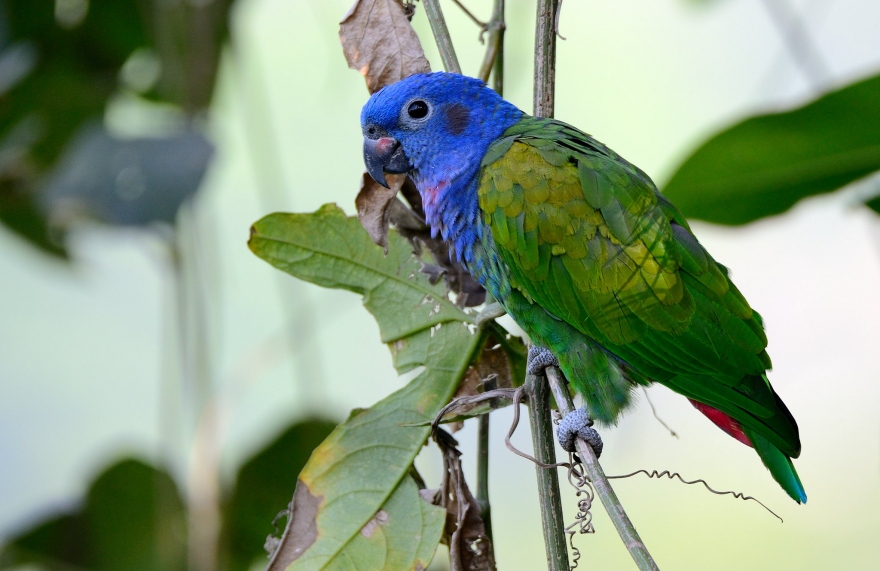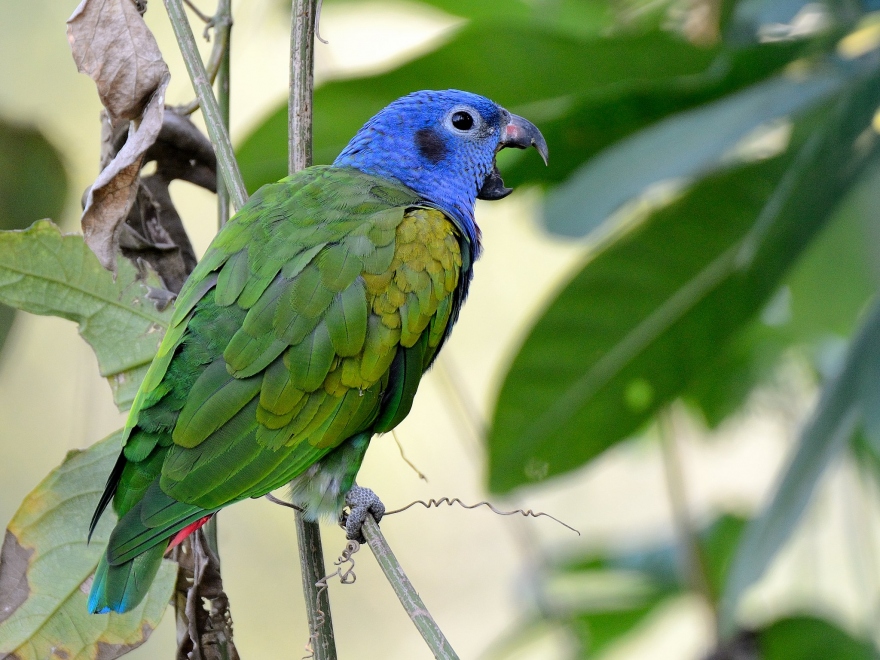The blue-headed pionus, also known simply as the blue-headed parrot is a medium-sized parrot found throughout subtropical South America. The species exists in limited but growing numbers in Australian aviculture. The genetic diversity of Australia’s population is thought to be quite robust, making the blue-headed a pionus a species that could become much more readily available over the next decade.

Housing & Compatibility
Due to the rarity of this species, they should be housed as single pairs in a large aviary. Outside of Australia, where the species is more abundant, blue-headed pionus are popular as indoor pets.
Their native habitat is warm and humid, so the aviary will need to be protected from cooler weather if housed outside of tropical regions.
Aggression between unpaired birds is occasionally seen, so double wiring between aviaries is essential.
Diet & Feeding
A quality medium parrot seed mix forms the basis of the blue-headed pionus’s diet. Seed should be stored in an airtight plastic container to prevent exposure to vermin and moisture. Seed can be soaked or sprouted to improve its nutritional value.
A good diet includes a mix of fruits, nuts, and vegetables, and leafy greens. Favourites include silverbeet, corn, apples, and pears.
Many breeders prefer to feed pellets instead of seed. Pellets provide a more balanced intake of vitamins and minerals and produce less waste. Commercial supplements such as egg & biscuit mix can be added to the diet to provide additional protein during the breeding season.

Breeding Blue-headed Pionus
Blue-headed pionus pairs can take many months to become comfortable enough with each other to commence breeding. The hen should be at least three years old when first bred.
They breed in hollow logs or nest boxes containing a sawdust or pine shaving substrate. A medium-sized nest box that’ss about a foot deep is ideal, but consider that different birds have different preferences for the size and shape of their box.
They will lay 3-5 eggs that are incubated by the hen for approximately 28 days. Chicks fledge at about 10-12 weeks of age and become fully independent three months later.
It can take up to two years for juvenile blue-headed pionu parrots to mature into their adult plumage.
Sexing
Black-headed caiques are sexually monomorphic and require a DNA test to accurately sex.
Mutations
There are no known blue-headed pionus mutations in Australia.
Outside of Australia, there are a small number of mutations that have been developed—most notably the yellow Lutino mutation. There are a number of closely related species in the pionus genus. What is thought to be a mutation may actually be a hybrid between two different pionus species.
Health & Lifespan
A strict worm control regime and regular preventative treatment for bacterial and fungal infections is critical to ensure the long-term health of any bird.
The blue-headed pionus can live for up to 40 years with good housing and nutrition.
Hi does anyone where I can buy a blue headed Pionus please? I am in Melbourne Victoria.